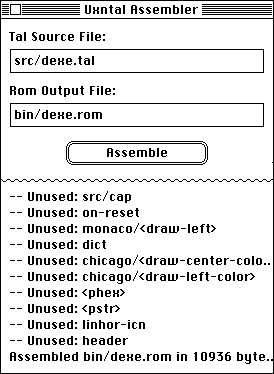Drifblim is strong enough to lift Pokemon or people but has no control over its flight. This causes it to drift with the wind and end up anywhere.
Drifblim is a Uxntal assembler, written in Uxntal.

The assembler is written in Uxntal itself, and is designed to help bootstrap the ecosystem, it outputs a symbols file and expects the standard Uxntal Notation. Here are the limits of the implementation:
- Limit of 48 bytes per token and scope.
- Maximum nesting depth of 255 for lambdas.
- Only one include per file, must be last token of file.

incoming: symbols uxntal software oscean uxntal devlog 2025 2024 2023 2022